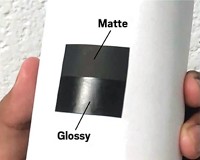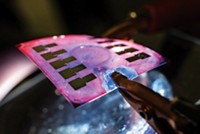Advertisement
Grab your lab coat. Let's get started
Welcome!
Welcome!
Create an account below to get 6 C&EN articles per month, receive newsletters and more - all free.
It seems this is your first time logging in online. Please enter the following information to continue.
As an ACS member you automatically get access to this site. All we need is few more details to create your reading experience.
Not you? Sign in with a different account.
Not you? Sign in with a different account.
ERROR 1
ERROR 1
ERROR 2
ERROR 2
ERROR 2
ERROR 2
ERROR 2
Password and Confirm password must match.
If you have an ACS member number, please enter it here so we can link this account to your membership. (optional)
ERROR 2
ACS values your privacy. By submitting your information, you are gaining access to C&EN and subscribing to our weekly newsletter. We use the information you provide to make your reading experience better, and we will never sell your data to third party members.
Biomaterials
Densified wood: A cool way to manage buildings’ energy use
Modified natural material dissipates heat passively by reflecting visible light and emitting infrared radiation
by Mitch Jacoby
May 25, 2019
| A version of this story appeared in
Volume 97, Issue 21

A simple procedure converts wood to an unnaturally strong material capable of passively cooling buildings, according to a study (Science 2019, DOI: 10.1126/science.aau9101). The finding may lead to “green” construction materials that substantially lower the energy used by buildings, especially for air conditioning. Industry data show that buildings consume 70% of the electricity in the US. Roughly half of it goes to heating and cooling. To address this demand, researchers have spent years developing materials that dissipate heat without consuming electricity. Some of those materials mediate passive cooling fairly well at night, by emitting thermal energy as infrared light. But daytime cooling remains challenging because those materials tend to absorb more energy, in the form of visible light, than they can dissipate. Xiaobo Yin of the University of Colorado Boulder, Liangbing Hu of the University of Maryland, College Park, and coworkers have taken steps toward a solution. Using hot hydrogen peroxide, the team delignified wood, then pressed it, forming a material with densely packed, partially aligned cellulose nanofibers. The bright-white product strongly reflects solar light instead of absorbing it, while dissipating heat by emitting mid-infrared wavelengths. Modeling studies show that the densified wood, which is more than eight times as strong as natural wood, could reduce energy costs by 20–60%, depending on the application.





Join the conversation
Contact the reporter
Submit a Letter to the Editor for publication
Engage with us on Twitter